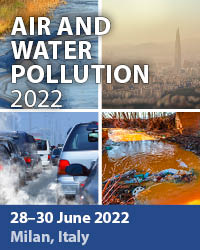Fate Of Anthropogenic Micropollutants During Wastewater Treatment And Influence On Receiving Surface Water
Price
Free (open access)
Transaction
Volume
103
Pages
11
Published
2007
Size
463 kb
Paper DOI
10.2495/WRM070371
Copyright
WIT Press
Author(s)
A. Bruchet & M. L. Janex-Habibi
Abstract
More than 110 volatile and base-neutral compounds or groups of compounds with concentrations exceeding 0.1 µg/L were identified in a wastewater treatment plant, at different stages of treatment. Individual concentrations ranged from 0.1 µg/L to 1 mg/L. The concentrations of many micropollutants were increased after mixing the raw water with recycled waters from the sludge drying process. Six compounds listed among the 33 priority pollutants from the Water Framework Directive, were detected. Due to the high efficiency of the treatment process and to the high dilution ratio at the outlet, this plant showed little influence on the receiving water. Keywords: base-neutral fraction, glycol ethers, hydrocarbons, nonylphenols, phtalates, priority pollutants, volatile organics, wastewater treatment. 1 Introduction Various natural and synthetic compounds have been shown to interfere with animal and human endocrine systems among them organochlorine pesticides, plasticizers, detergents, natural and synthetic hormones, organometallics or heavy metals. A relationship is suspected between these compounds and hormonal dependant cancers, in particular breast and testicular cancers. Simultaneously, more and more researchers are also discovering drugs and their metabolites as well as personal care products in drinking water resources. Although the levels of drugs found can be considered as rather small compared to the amounts prescribed to patients, there is concern about their long-term effects on humans as well as on aquatic organisms. One of the questions raised is
Keywords
base-neutral fraction, glycol ethers, hydrocarbons, nonylphenols,phtalates, priority pollutants, volatile organics, wastewater treatment.





